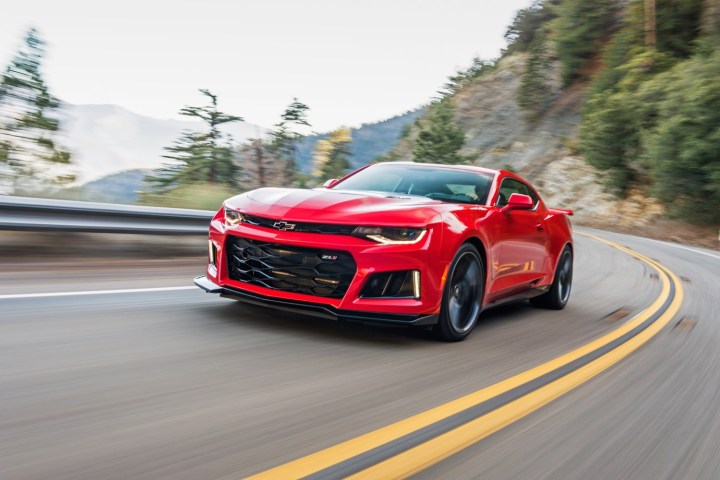
Chevy recently took its most muscular Camaro to the Papenburg High Speed Oval in Germany, where it achieved a wind-corrected top speed of 198 mph. It’s standard procedure in top-speed testing to compensate for wind by averaging runs in both directions. Over Papenburg’s 7.6-mile loop, the ZL1 actually hit 202.3 mph in one direction, and 193.3 mph in the other.
For the test, Chevy used a ZL1 equipped with the 10-speed automatic transmission (a six-speed manual is also available), on stock tires with pressure set to 44 psi. Chevy says that’s the recommended setting for extended high-speed driving, but it’s also the maximum pressure the tires’ sidewalls are rated for, so it’s not a good idea for everyday driving. The ZL1 did its high-speed runs with some added safety and data-logging equipment, but was otherwise completely stock.
The ZL1 may have just missed the magic 200 mph, but it still put in an impressive performance for something that isn’t a pure-bred supercar. The Chevy also narrowly missed beating the rival Dodge Challenger SRT Hellcat, which has an official top speed of 199 mph. Both cars are armed with 6.2-liter supercharged V8 engines, with the Hellcat producing 707 horsepower and the ZL1 producing 650hp.
Besides the 198-mph top speed, Chevy says the 10-speed automatic ZL1 will do 0 to 60 mph in 3.5 seconds, and run the quarter mile in 11.4 seconds at 127 mph. When not accelerating in a straight line, the ZL1 can pull 1.02 g of cornering grip, and come to a complete stop from 60 mph in 107 feet. A ZL1 also recorded an 11.67-second lap of Germany’s Nürburgring last year, beating a slew of supercars.
While not exactly what you would call an economy car, the ZL1 is one of the cheapest ways to attain that kind of performance. Pricing starts at $63,435 for a ZL1 coupe (a convertible is available as well) with the manual transmission, and $65,830 for an automatic-equipped coupe. Both prices include destination charges and gas-guzzler taxes.
Editors' Recommendations
- 2020 Chevrolet Camaro vs. 2020 Ford Mustang
- This 750-hp Chevrolet Camaro is not your average, soul-crushing rental car


